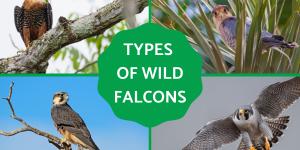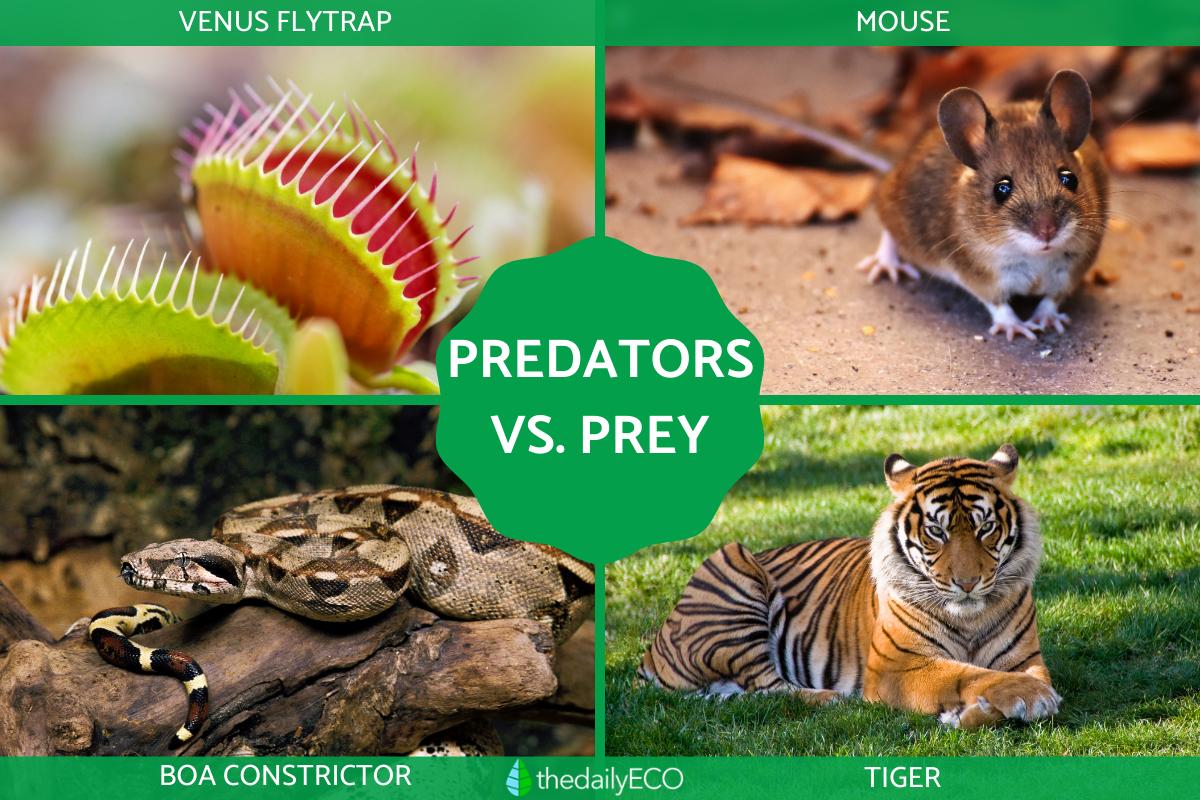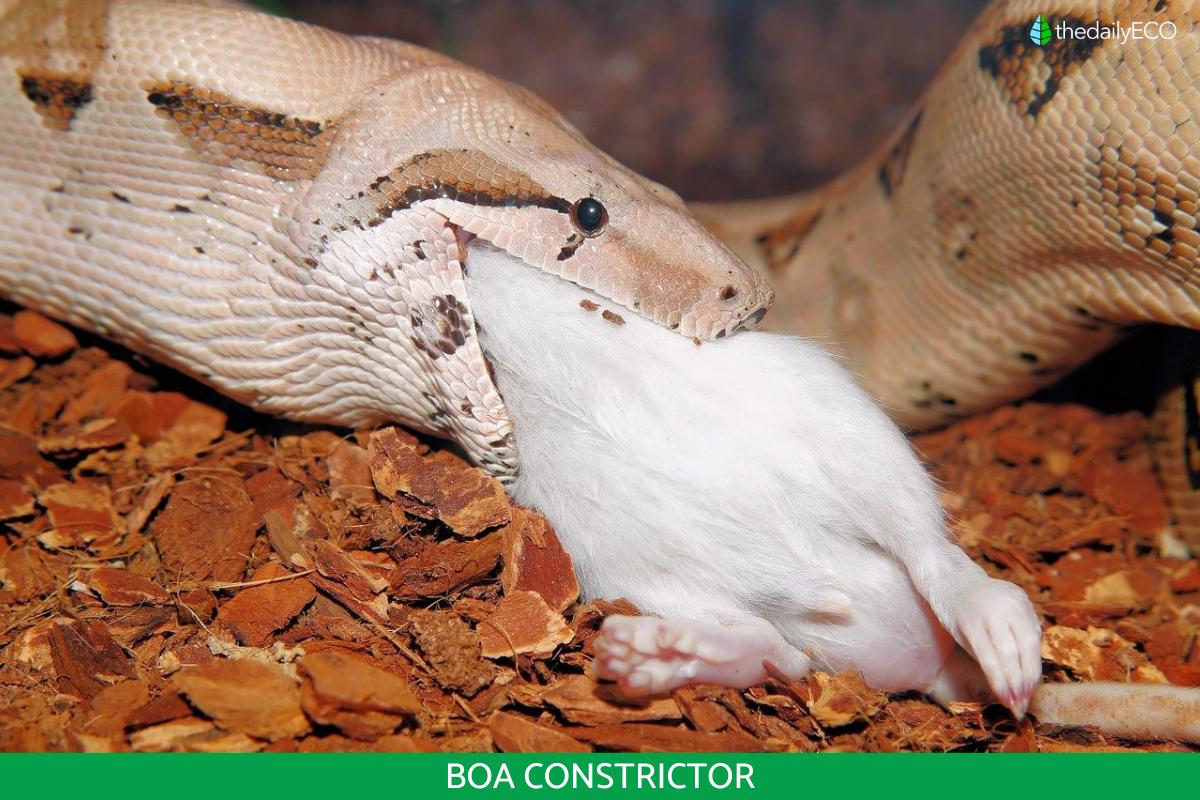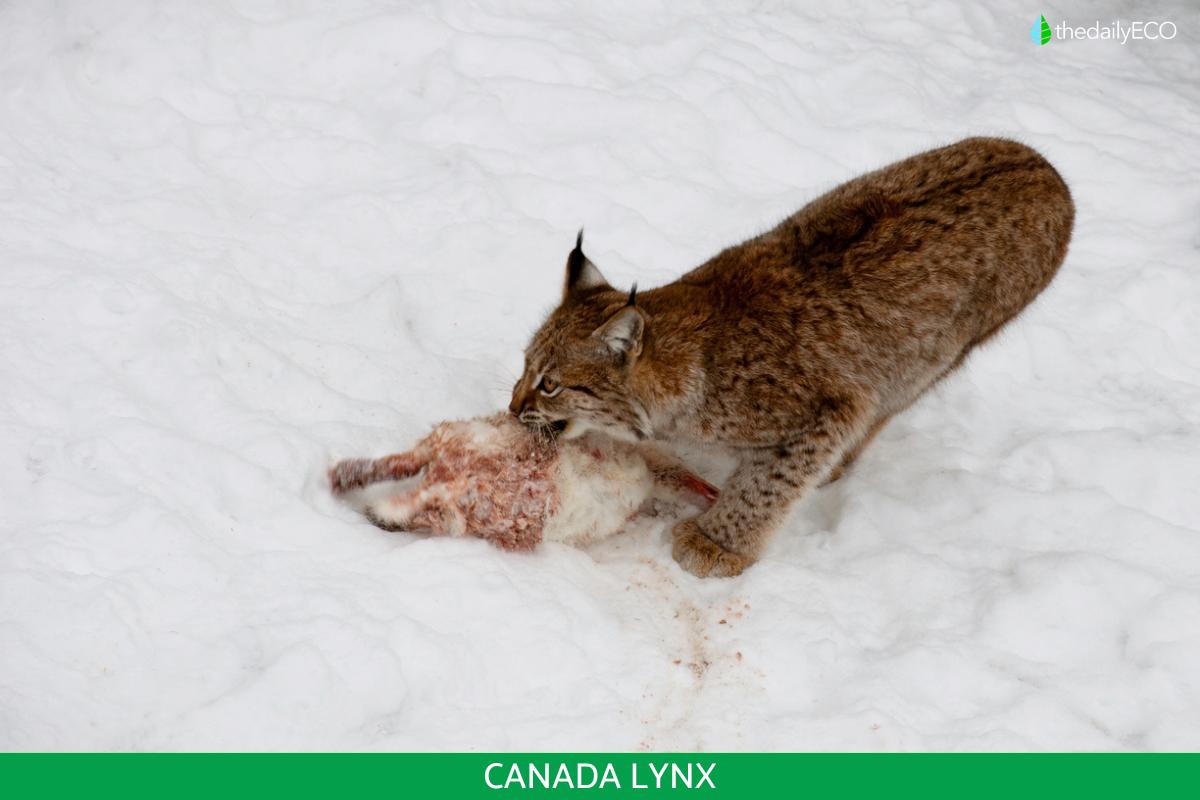Differences Between Predator vs. Prey


We can accurately say the difference between predator and prey is that predators hunt prey for food. These are in reference to their respective positions within the food web. These roles are not always clearly delineated, with some predators being prey to others, depending on the circumstances. If we look at the roles of prey vs. predator, it is actually more complicated than this simple definition suggests. The physical and behavioral characteristics of prey and predator animals can differ greatly, often as adaptations to their roles in a given ecosystem.
For this reason, thedailyECO looks in more detail at the differences between predator vs. prey. We explain the characteristics of prey and predator animals, as well as provide examples of these animals in the wild.
What are predators and prey?
To understand the differences between predators vs. prey, we need to know their relationship. Predators are living beings that hunt other organisms, these latter organisms known as prey. While they can be used to refer to a wide variety of organisms, they are terms most often associated with the animal kingdom. The main purpose of predators killing prey is survival as the prey animals provide a transfer of energy in the form of food. This is a type of symbiosis which is known as ‘predation’.
When many of us think of this relationship between animals, we think of apex predators that have no predators themselves. This is only one form of predation. Predators by definition need to eat other animals, but some are strictly carnivorous while others are largely omnivorous. These latter types of predators may eat plant as well as animal matter.
Animals that eat only plants are known as herbivores. While it may seem unlikely, there are also plants which are considered predators. This is evident in plants such as the Venus flytrap (Dionaea muscipula), a carnivorous plant which traps insects for consumption. Some researchers even consider parasites as types of predators since they feed on the tissues or cells of their hosts as a predator feeds on prey.
The relationship between prey and predator plays an important role in population dynamics of ecosystems. Without predators, there would be an abundance of prey and the food of these prey. Regulation also works in the same way, since the number of prey determines the number of predators.
Characteristics of predators
While the diversity between various types of predator organisms is great, there are certain characteristics which are shared among most predators. They include the following:
- Highly developed senses: such as smell, vision or hearing, sometimes capable of recognizing prey from miles away.
- Developed structure: their body structure often needs to be more agile than their prey, with muscles capable of traveling long distances at maximum speed. They may have heavy bodies which can be used to subdue their prey. They often have sharp claws and teeth to tear their prey. Some even have toxic venom which is used to paralyze and/or kill their prey.
- Attractive to their prey: some predators lure their prey to be able to catch them more easily. This is the case with carnivorous plants which often attract insects which think they can use them as food.
Characteristics of prey
Prey also have adaptive characteristics to defend themselves from their predators. They include:
- Camouflage capacity: thanks to which they can go unnoticed in their surroundings. Colors can also serve as a warning, with bright colors or patterns indicating to predators that they may be in danger if they are harmed.
- Eyes on the sides of their head: allowing them to better see their surroundings and remain on alert for predators. Their behavior is usually more alert and nervous than predators, so they are ready to run in case of a threat.
- Mechanical defense structures: these are physical adaptations against predators such as sharp spines or even armor plates made of keratin.
- Chemical defenses: some organisms produce a toxin which can be used as self-defense against certain predators. Even some plants are poisonous to prevent themselves being eaten.
Another important difference between a predator vs. prey is their population numbers. It must be taken into account that the number of prey animals is also important. This amount normally exceeds the amount of predators since the numbers of the former are decimated by the latter.
Discover a very specific type of predator with our article explaining the different types of piscivorous animals.
Examples of predators and prey
In order to better understand the differences between predators vs. prey, we should look at the interactions between them. Below we are going to provide some examples of these relationships.
Boa constrictor and vertebrates
The boa constrictor is a species of snake native to South America. It has been introduced to other ecosystems causing serious losses of wild biodiversity due to its predatory nature. It does not have a specific prey, but takes advantage of all the vertebrate animals it can find, whether mammals, birds or reptiles.
Boa constrictor snakes do not have venom. Instead, they use their heavy bodies and coiling ability to suffocate their prey. They hunt at night because they use the temperature difference between them and their prey as a method of detection. They do so using their thermosensitive lip scales. In addition to their arboreal behaviors, this nocturnal behavior means bats are their preferred prey.
Stinking corpse lily and flesh flies
Rafflesia is a genus of giant exotic flowers of intense red color that can reach a meter in diameter. They are commonly known as stinking corpse lilies because use their features to simulate a dead animal, doing so by giving off an intense aroma of putrefaction. Even the heat they emit simulates a recently dead animal. Although it is unpleasant to humans, flesh flies that lay their eggs in decomposing meat are inevitably attracted to them before being swallowed as prey. They are unable to photosynthesize. In addition to preying on flies, they parasitize trees to survive.
Canada lynx and snowshoe hare
The case of the Canada lynx (Lynx canadensis) and the snowshoe hare (Lepus americanus) is an excellent example to help understand the role of the relationship between predator and prey plays in population dynamics.
The Canada lynx feeds mainly on snowshoe hares. It has been observed that lynx populations are in greater abundance when there are more snowshoe hares available as prey. When they reach the point that the hare populations are seriously depleted, they can consume other animals such as foxes are deer. However, they are harder to capture and may not be in enough abundance. The result is the decline of lynx populations which recover when the hares are back in abundance.
Learn about the different types of lynxes in our related guide.



Examples of apex predators
Even some of the most powerful or vicious predators might be consumed by other animals. When we find a predator that has no other predators of its own, we are faced with an apex predator. These are the animals that are at the top of the food chain and they help define the nature of this food system more than most others. This is because they regulate other plant and animal species within their ecosystem, whether directly or indirectly.
Generally speaking, apex predators are large in size, although this is relative. Thy are carnivorous and some examples are the following:
Sperm whale
The sperm whale (Physeter macrocephalus) is a marine mammal that weighs up to 50 tons. Its diet is proportional to its size and consists of whales, rays and squid, including giant cephalopods. These animals can live at great depths, since the sperm whale can dive deeper than any other mammal. To find their prey they use echolocation. It also generates the loudest clicks in the animal kingdom, which are so loud they can stun prey. In fact, it has been estimated that the sperm whale is the largest predator that has ever existed.
Learn more about predators using soundwaves to catch prey with our article on what animals use echolocation?
Jaguar
One of the most recognizable big cat species, the jaguar (Panthera onca) is the top predator of neotropical forests. It is an excellent predator thanks to a land speed of up to 60 km per hour, an ability to approach prey stealthily and heavy legs with sharp claws used to kill efficiently. Its spotted camouflage helps it ambush its prey, rather than chase them like other big cats. Jaguar prey include deer, armadillos, crocodiles, snakes, cattle, fish, turtles and even frogs. In addition, it has a unique lethal technique among felines. They pierce the skull of their prey in the temporal bones until reaching the brain.
Golden eagle
The golden eagle (Aquila chrysaetos) has several subspecies with a relatively wide population distribution range. They have excellent vision that it uses to glide high in the sky in search of their prey. These are often in the form of mammals such as rabbits or deer, as well as various fish species. When it opens its wings, its wingspan can measure up to 2 m and it uses a precise dive to catch prey. Their sharp talons pierce their lungs to kill in a matter of seconds.
Discover more about one of the ocean's most prolific and efficient predators with our article on whether killer whales are dangerous to humans.
If you want to read similar articles to Differences Between Predator vs. Prey, we recommend you visit our Wild animals category.
- Di Bitetti, M. (2008). Top predators and trophic cascades in terrestrial environments. Retrieved from: https://www.researchgate.net/publication/319532849_Depredadores_tope_y_cascadas_troficas_en_ambientes_terrestres
- Rogers, K. (2011). The Rise and Fall of the Canada Lynx and Snowshoe Hare. Britannica Blog. Retrieved from: http://blogs.britannica.com/2011/06/rise-fall-canada-lynx-snowshoe-hare/








